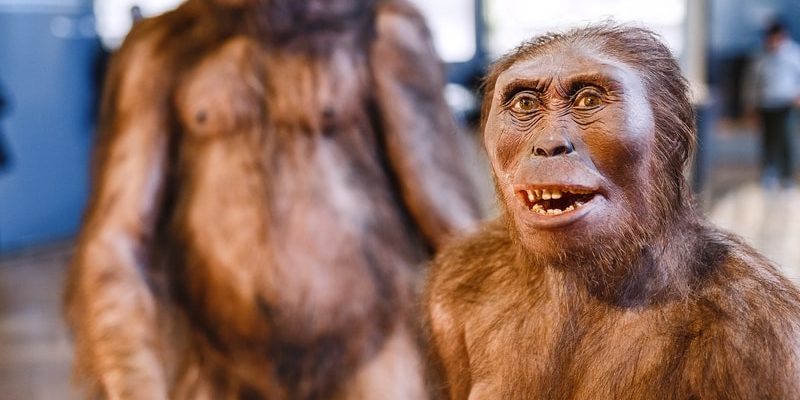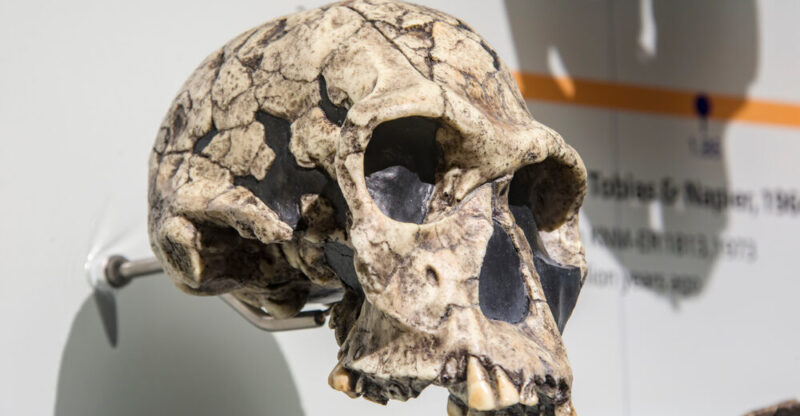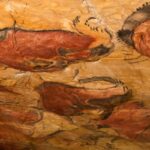We explain what homo erectus is, where it originated and what its characteristics are. In addition, its importance and extinction.

What is the Homo erectus?
Homo erectus is The scientific name of a kind of the genus homothat is, a hominid, belonging to a phase of human evolution. Your name Homo erectus It means in Latin “erect man”, that is, “standing man.”
Gender Homo erectus It emerged about 1.5 million years ago and disappeared approximately 500,000 years ago. He integrated various species and inhabited Africa, Asia and Europe. His oldest fossil remains were found in Africa and date from 1.5 million years.
At the time of the first finding of their fossil remains, The researchers believed it was the first species in walked. However, fossil remains of the Homo habilis and of Australopithecus Afarensiswhich turned out to be hominid with stood in evolutionary phases prior to Homo erectus.
See also: Neanderthal man
Origin of Homo erectus

The oldest fossil remains of Homo erectus They were found in Africa and are 1.5 million years old. Homo Erectus populations then migrated to Europe and Asia. Many scholars estimate that the population movement could have taken place a million years ago.
However, researchers have not yet been able to establish a precise dating of many of the archaeological sites, so the debate about when it may have originated.
Characteristics of Homo erectus

The main physical characteristics of the Homo erectus that differentiated him from his predecessor, the Homo habiliswere:
- Brain size. Among the different species of Homo erectusthe volume of cranial capacity ranged between 850 and 1100 cm3.
- Body size. The height of the males reached 1.8 meters and that of the females at 1.5 meters.
- Cranial structure. The skull was long and low, a little crushed on the forehead and on the back and with a greater thickness of cranial bones than that of primitive hominids.
- Facial structure. The face was short and wide, with a nasal opening projected forward, which suggests the appearance of the typical external human nose with nasal windows directed down.
Importance of Homo erectus
This genre presented a series of adaptations and behavioral modifications that constitute it as a crucial evolutionary phase of the human. He Homo erectus It was the first genre of hominids in:
- Migrate out of Africa.
- Hunt regularly and include meat as a substantial food source.
- Make camps or erect transient shelters.
- Manufacture tools systematically.
- Dominate the use of fire.
See also: Primitive Man
Feeding of Homo erectus

Although there are still debates on the subject, most researchers agree that the Homo erectus They practiced hunting of small animalsalthough for a long time the scavenging activity (the consumption of animals already killed by other predators) will continue.
It is also believed that some of the species belonging to the genus Homo erectus They dominated the use of fire. However, there are no certainties on whether it was used for food cooking.
Society of Homo erectus
He Homo erectus would have handled some lithic (stone) technology to The manufacture of weapons (axes, spears, knives) probably used in the hunting of large animals. These tools become less and less rudimentary as the species grows and diversifies.
The Homo erectus They were the first hominids in hunting animals and combined meat consumption with collection. This has been suggested by various specialists based on the material remains of the Olduvai, Tanzania and Koobi Fora, Kenya deposits.
In these deposits thousands of animals of animals and stones have been found. However, today there are different hypotheses about the interpretation of these findings, and some suggest that it was camps in which the groups shared food.
Java man
The name given to first Homo erectus found It was the “Java man”, since he found himself on the island of that same name, in Indonesia, in 1891.
His discoverer was the Dutch anatomist Eugène Dubois, who baptized him as Anthropopitecus erectusname that he later changed to Pithecanthropus erectus.
Subespecies of Homo erectus
The subspecies known so far of the Homo erectus are:
- Homo erectus erectus U Java man
- Homo erectus pekinensis u Beijing Man
- Homo Erectus Soloensis u man of alone
- Homo erectus latianensis u man of latian
- Homo erectus nankinensis U nankin man
- Homo erectus yuanmounsis U Yuanmou man
It is also suspected that other fossils registered as different species are really variants of the same Homo erectussuch as:
- Homo (erectus) Ergaster
- Homo (erectus) PALAEJAVANICUS either Meganthropus
- Homo (erectus) Tautavelensis U tautavel man
Archaeological sites of the Homo erectus
He Homo erectus It was the genre of hominids that migrated from Africa and populated for the first time the continents of Asia and Europe. Among the main archaeological deposits where fossil and material remains of the populations of Homo erectus We can find are the following:
- Africa. Koobi Fora and Naviokotome (Kenya), Olduvai and Laetoli (Tanzania), Awash (Ethiopia) and Ternifine (Algeria).
- Europe. Dmanisi (Georgia).
- Asia. Sangn and Trinil (Java), Lantian and Zhoukoudian (China).
Extinction of Homo erectus
For approximately 500,000 years, the Homo erectus began to evolve towards the archaic forms of the Homo sapiens. Archaeological findings indicate that there were parallel developments in different parts of the world inhabited by the Homo erectus.
Therefore, among specialists we usually speak of a general process of sapientizationwhose result is the gradual appearance of skulls of greater size and more globular form, until the disappearance of the Homo erectus.
References
- Lewin, R. (1994). Human evolution. Salvat Scientific Library. Vázquez, R. (1992). Homo erectus: origin and migration to Asia. Anthropology Notebooks, 891-103.
- Cela Conde, CJ, & Ayala, FJ (2013). Human evolution. The way to our species. Editorial Alliance.
- Harris, M. (1981). Introduction to General Anthropology. Alliance.
- “Homo erectus” on Wikipedia.
- “Homo erectus erectus” on Wikipedia.
- “Was the ‘homo erectus’ the first species capable of sailing successfully?” In Spanish.
- “Homo erectus” in dinosaurs.info.
- “Homo erectus – characteristics – hominids” in history and biographies.
- “Homo erectus”In the Smithsonian National Museum of Natural History.





